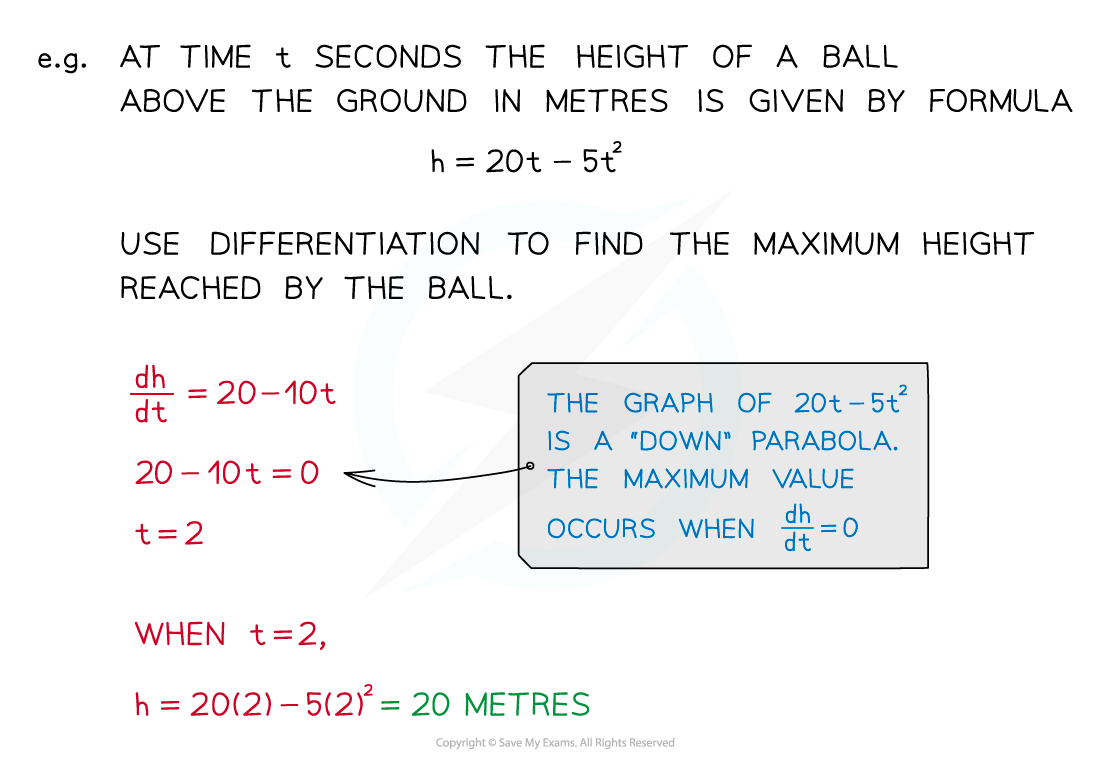Modelling with Differentiation and Optimisation (AQA GCSE Further Maths): Revision Note
Exam code: 8365
Modelling with differentiation
How can I use differentiation to solve modelling questions?
Derivatives can be calculated for any variables – not just y and x
In every case the derivative is a formula giving the rate of change of one variable with respect to the other variable
For example if
then
is the rate of change of
with respect to
Differentiation can be used to find maximum and minimum points of a function (see Stationary Points & Turning Points)
Therefore it can be used to solve maximisation and minimisation problems in modelling questions
For example you may want to
Maximise the volume of a container
Minimise the amount of fuel used

Examiner Tips and Tricks
Exam questions on this topic will often be divided into two parts:
First a 'Show that...' part where you derive a given formula from the information in the question
And then a 'Find...' part where you use differentiation to answer a question about the formula
Even if you can't answer the first part you can still use the formula to answer the second part
Worked Example
A cuboid has length cm, width
cm, and height
cm.
(a)Show that the volume,
cm3 is given by
.
The volume of a cuboid is ""
Expand and simplify
(b) Find the maximum volume of the cuboid.
Differentiate V with respect to x
At the maximum volume,
Solve for x
So the value of x, at the maximum volume is 0.3
Find the maximum volume by substituting x = 0.3 in to the formula for V
The maximum volume of the cuboid is 1.8 cm3
(c) Prove that your answer is a maximum value.
Using the second derivative is usually the easiest way to find the nature of a stationary point
< 0
The value of the second derivative (at ) is negative, therefore V = 1.8 cm3 is a maximum volume

Unlock more, it's free!
Did this page help you?